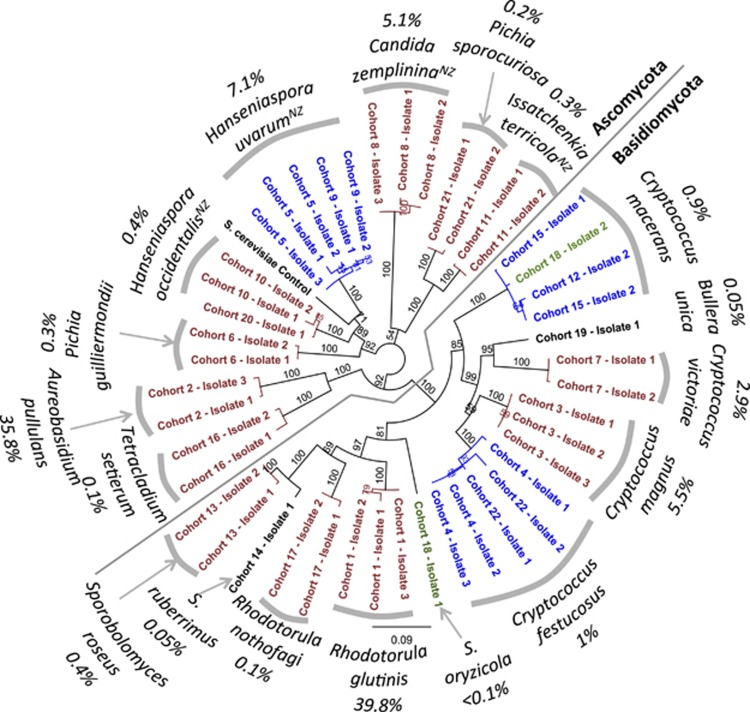Figure 1.
Correlation between ITS-RFLP patterns and D1/D2 26s RNA sequence data. Neighbour-joining consensus tree of 1000 bootstrap replicates reconstructed from an alignment of the D1/D2 26s RNA region for 45 isolates associated with Chardonnay and Syrah fruit (see Supplementary Material). Random isolates from each of the 22 ITS-RFLP cohorts were selected. Isolates from the same cohort whose 26S sequences match to the same type species and are placed together with 100% support are shown in red. Isolates from different ITS-RFLP cohorts whose 26S sequences match to the same species in GenBank and are placed together with 100% support are shown in blue. The two examples from cohort 18 that yielded different 26s RNA sequences are in green. The >98% homology of our query sequences to type-strain deposits in GenBank allow species names to be ascribed to well-supported groups and the abundance of each group among the 2688 isolates is shown. Those species previously reported as associated with juice/wines in NZ are denoted with a superscript.

